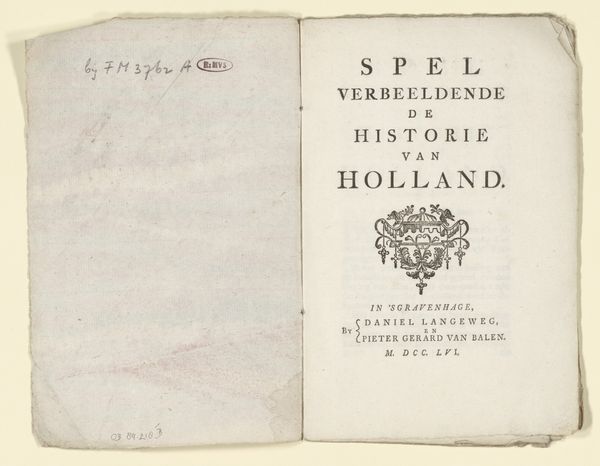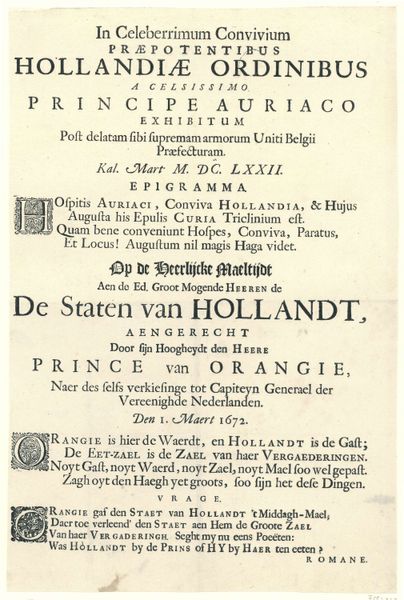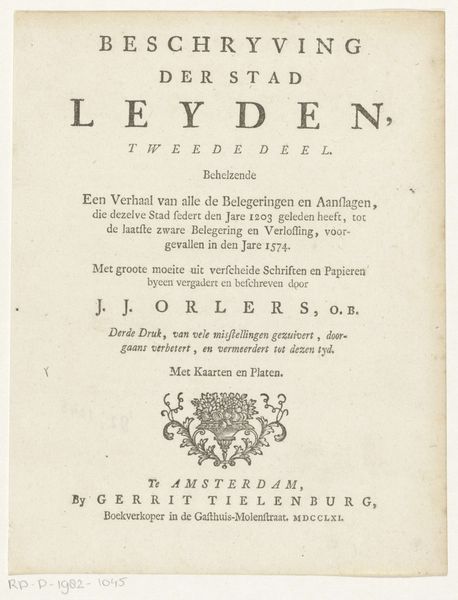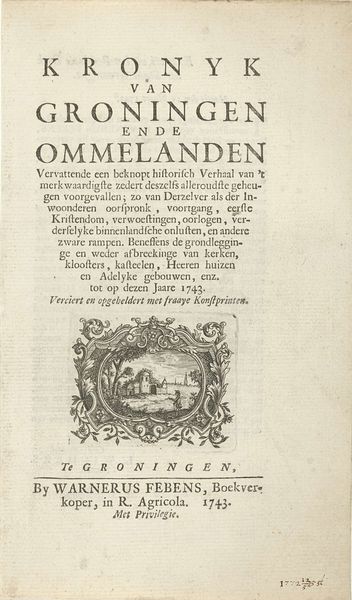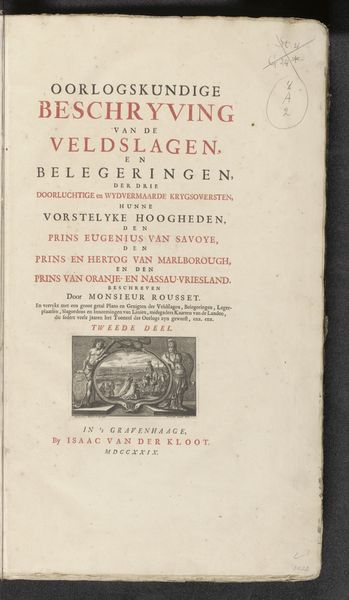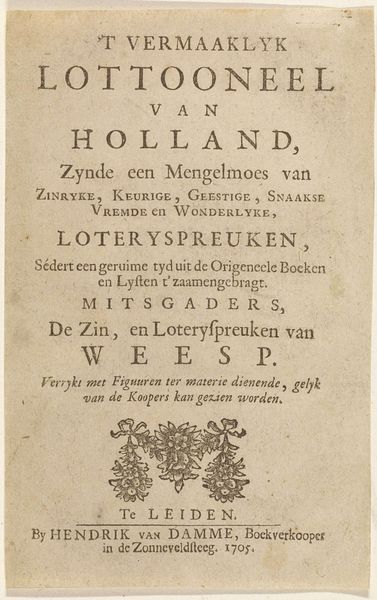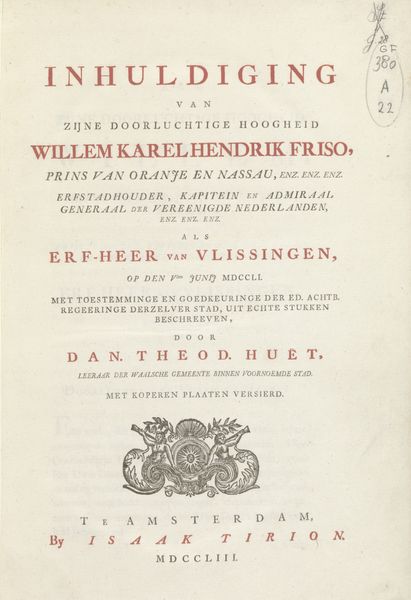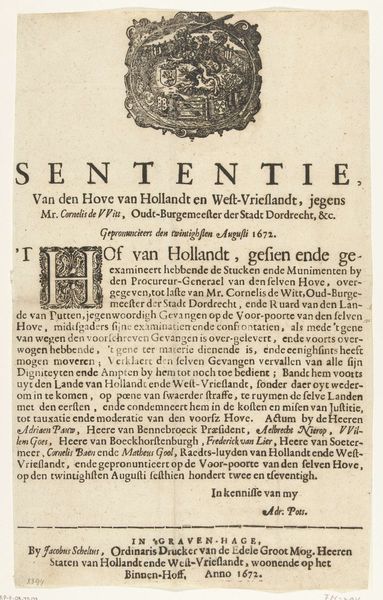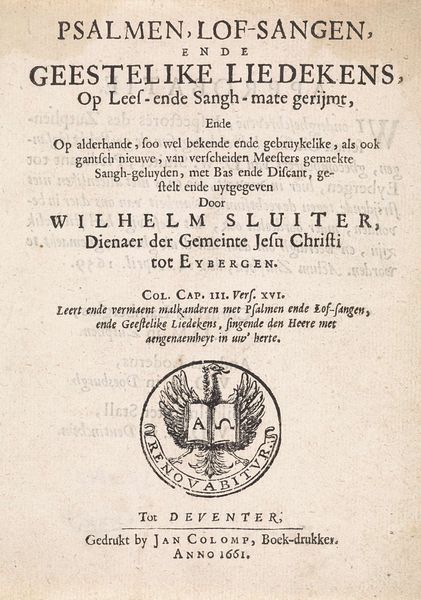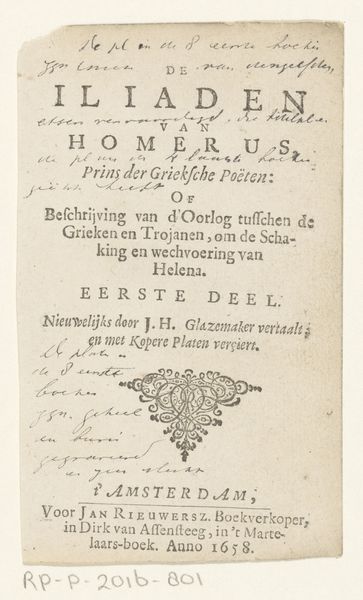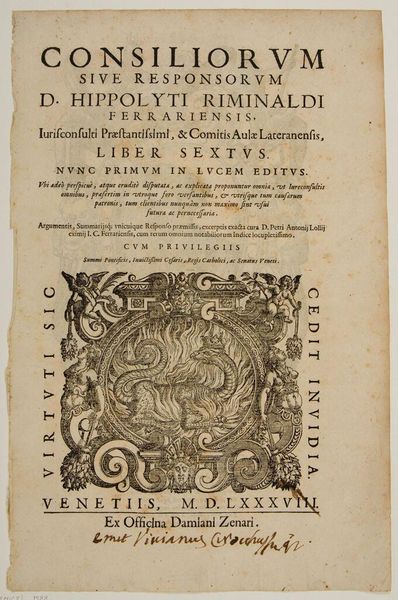
Dat eene Populare ofte Volks-Regeering voor den gemeenen Ingeseetenen van Hollandt seer Schadelick, eene Monarchale (...) Doodelick; ende daarentegen eene Aristokratike (...) 1684
0:00
0:00
print, paper, typography
#
dutch-golden-age
# print
#
paper
#
typography
Dimensions: height 21.1 cm, width 17.2 cm
Copyright: Rijks Museum: Open Domain
Curator: The first thing that strikes me is the weight of the words themselves. I feel the artist really wants to persuade me of something, here. Editor: Indeed. This typographic print, dating back to 1684 and crafted by Jan Rieuwertsz, presents a powerful argument in text, etched onto paper with ink. The long title translates roughly to "That a popular or people's government for the common inhabitants of Holland is very harmful, a monarchical one deadly; and on the contrary, an aristocratic government...". Curator: A real mouthful. But looking at this cover... or is it a poster? It feels urgent, doesn't it? The contrast between the large, blocky letters announcing the supposed dangers and then the finer print arguing the virtues of aristocracy. Is it pure propaganda, or more nuanced than that? Editor: Perhaps it reflects the political turmoil of the time. Seventeenth-century Dutch politics was incredibly complex, involving debates about the role of the House of Orange, the power of regents, and popular sovereignty. Even the choice of typography, in a way, is symbolic of the stark divisions and anxieties permeating Dutch society. The ornate device separating the main claim from the colophon evokes a sense of establishment authority... and masks, perhaps, something darker? Curator: I agree. This device sits right at the middle, where it looks a bit theatrical; it catches the light. It's beautiful, yet unsettling, reminding us that beneath the surface of any political statement lie layers of interpretation and intention. Is Rieuwertsz using visual symbols to signal allegiance or critique? And to whom? Editor: That's precisely the question. Without deeper historical insight, we’re left to grapple with the ambiguity inherent in such persuasive texts. This work holds up to us a reflection on not only the governance of the Dutch but perhaps also a caution regarding the fragility of democratic ideals and rhetoric. Curator: Absolutely. What I will be carrying from this text, beyond its immediate political statement, is its echo of present day’s polarized and complicated reality. Editor: Yes, in that way, this historical artefact feels urgently, disconcertingly, alive.
Comments
No comments
Be the first to comment and join the conversation on the ultimate creative platform.
